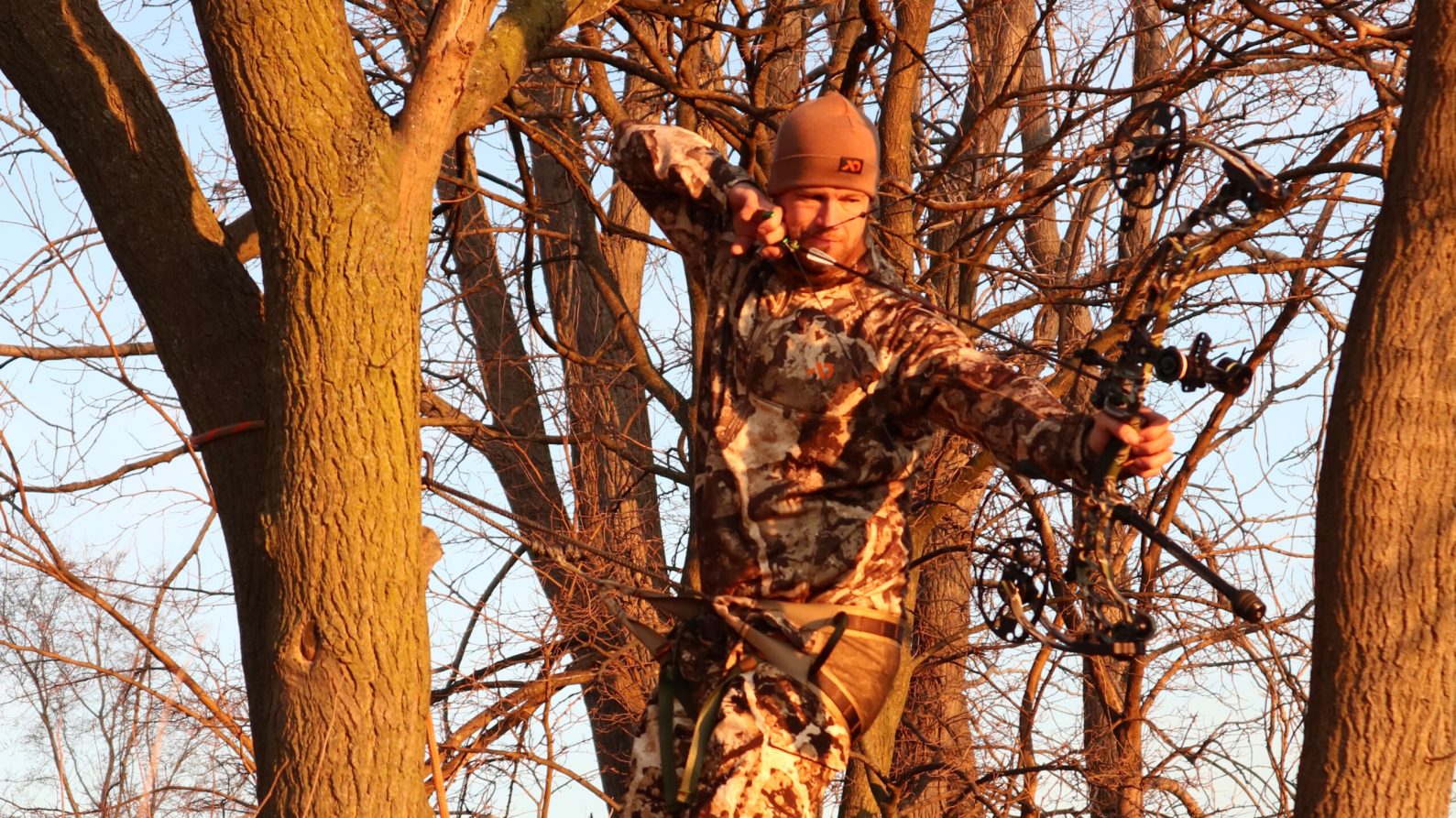We may earn revenue from the products available on this page and participate in affiliate programs. Learn More ›
Not every deer hunter has access to private ground where they can leave tree stands all season and not worry about hunting pressure. The truth is, most hunters are pounding public land or pressured private land, or a combination of the two. So unless you have a massive tract of private land all to yourself, pressure from other hunters is one of the biggest factors to consider.
When you’re hunting pressured lands, the importance of maintaining the element of surprise can’t be overstated. Rarely do you find a scenario where you can hunt multiple days in the same location and find success on mature bucks. Deer—especially older deer—are masters at detecting human scent and avoiding it. They adapt to changing human pressure, and you must adapt with them by being mobile. It’s a strategy that has produced consistent results for me.
Fortunately, we are in the golden age of mobile deer hunting. Over the past decade, more companies have been manufacturing quality equipment that is light, fast to set up, and more packable. With so many options on the market, you can build and tweak your mobile setup to fit your own style. For example, if you’re a hunter that hikes through thick cover or difficult terrain, a set of lightweight climbing sticks and a tree saddle might fit you perfectly. If you prefer a tree stand, there are stands that weigh 6 to 7 pounds and paired with lightweight climbing sticks, you have a packable package. If you want to harness the power of these mobile hunting setups, the first decision is to decide between a tree stand and a tree saddle.
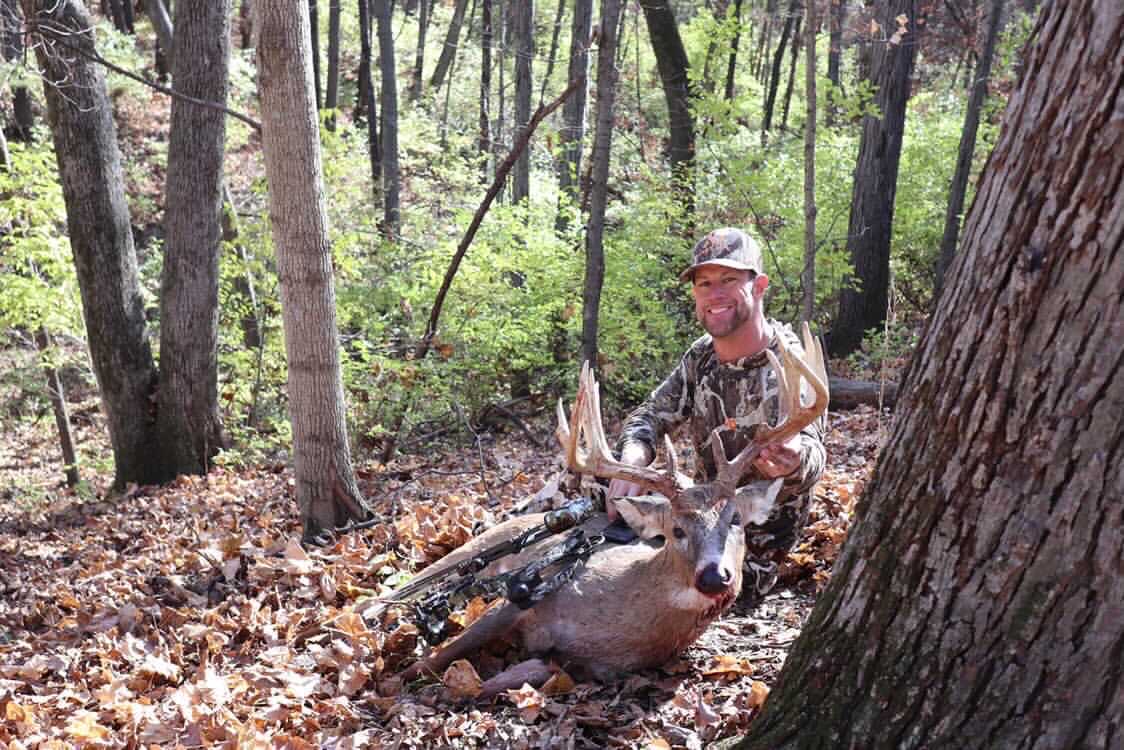
Things to Consider Before Buying a Tree Saddle
Tree saddles have been around for a long time but didn’t catch on until recently. The benefits of saddles are the reduced weight and bulk, the ability to hunt nearly any tree, 360 degree shooting in most trees, as well as using the tree for concealment.
I think tree saddles shine in several areas, although they’re certainly capable in any scenario. I like using the saddle when I’m hunting in big woods or hill country where there are a lot of mature trees. In this type of country, you’ll often find trees without many branches or cover. With the tree saddle you can hunt high on the backside of the tree using the tree itself as a cover so you don’t stick out like a large blob as you would with a climbing tree stand.
I like saddles for the same reason when hunting low in a tree. Often, you’re hunting in an area where you’re not allowed to trim branches and getting up too high in the canopy would really limit your shoot lanes. I often find myself sitting up low at 10 feet or less on the backside of the tree, using it as cover to stay undetected until my shot presents itself. I’ve killed a handful of mature bucks just in the last couple years doing just that. Another scenario when I prefer the saddle is when I have a long or difficult walk through thick cover or steep terrain. The reduced weight and bulk is awesome when you’re trying to slip through cattails or hike 400-foot bluffs trying to get to that remote spot. My personal saddle, ropes, platform, and climbing sticks weigh under 9 pounds total.
Are they comfortable, you ask? For me, and most hunters that try them, they are more comfortable than sitting in a hang-on tree stand. But, some people just can’t find comfort in a tree saddle. As a result of their recent boom in popularity, there are plenty of saddle options and each has a different feel. If one isn’t comfortable, another company’s saddle might be for you. One factor to consider when selecting a saddle is if it is a single or double panel. Many consider the two panel saddles more comfortable, but the sacrifice is more weight. Another important factor for saddle comfort is the height of the tether. By adjusting your tether position, you change how your weight is distributed on the saddle. Features like an adjustable bridge or back panels also help make a saddle more comfortable.
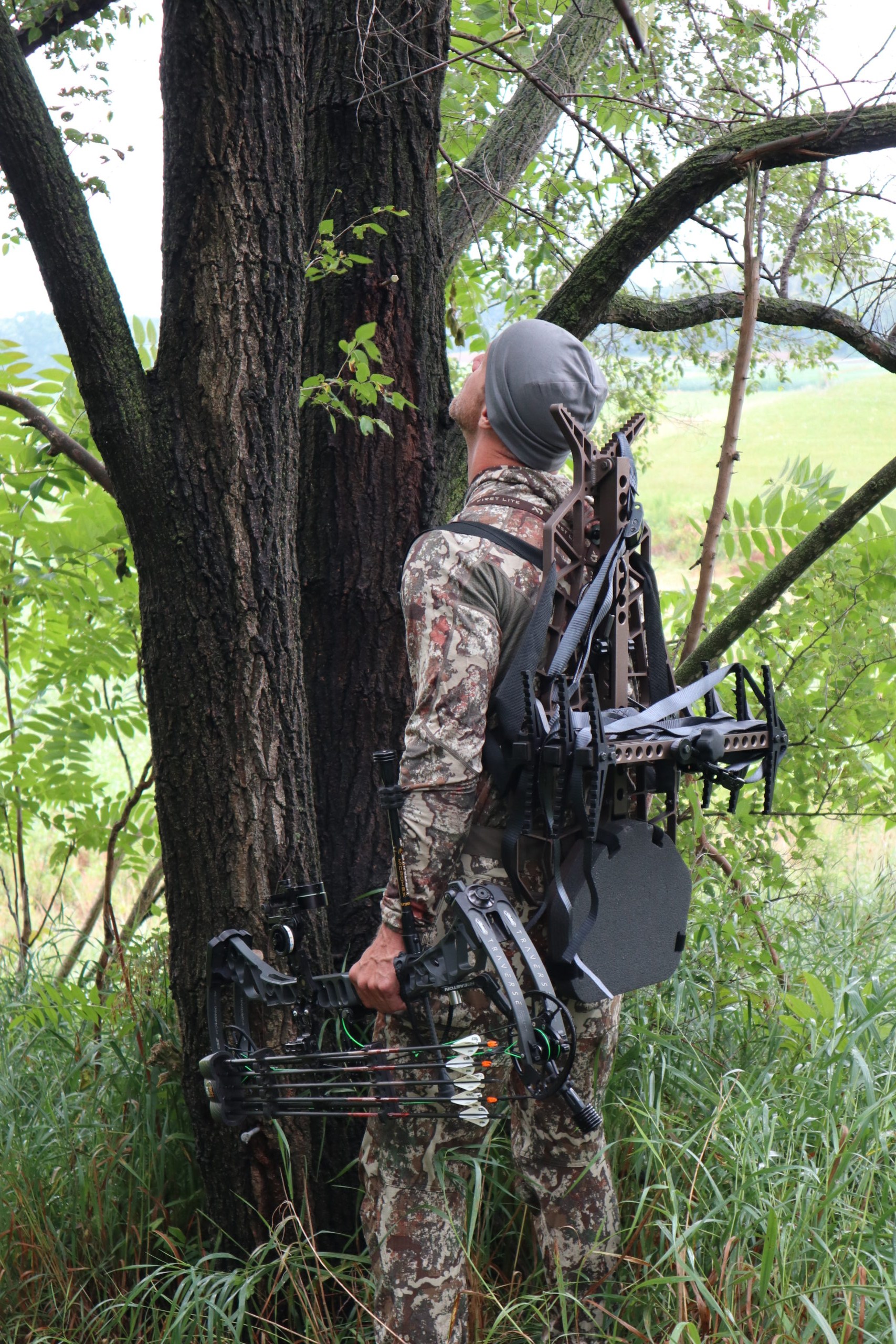
Things to Consider Before Buying a Tree Stand
The two types of tree stands for mobile hunting are climbers and hang-on stands. For me, a hang-on is far more versatile and better suited to mobile hunting. Climbers need a straight and limbless tree, which limits your choices. Hang-on stands on the other hand allow you to hunt nearly any tree.
Hand-on tree stands are nothing new, but the modern mobile stands are simply amazing. No longer is a 14-pound stand considered light. There are tree stands coming out that are 6 or 7 pounds, and they don’t cut weight by sacrificing platform size. For example, my old mobile setup was a tree stand and climbing sticks. My entire setup weighed in at roughly 25 pounds. Now I can get nearly the same set up with the newest mobile tree stands and sticks and come in at 12 or 13 pounds.
The hang-on stand shines in a couple of different scenarios. They’re perfect for trees with good cover at the desired hunting height such as a cedar or pine tree. And for some shots, the tree stand requires less movement to get into position. Then there’s comfort. Some hunters are just more comfortable in a tree stand for long hours. They also have a short learning curve for hunters coming from ladder or climbing tree stands.
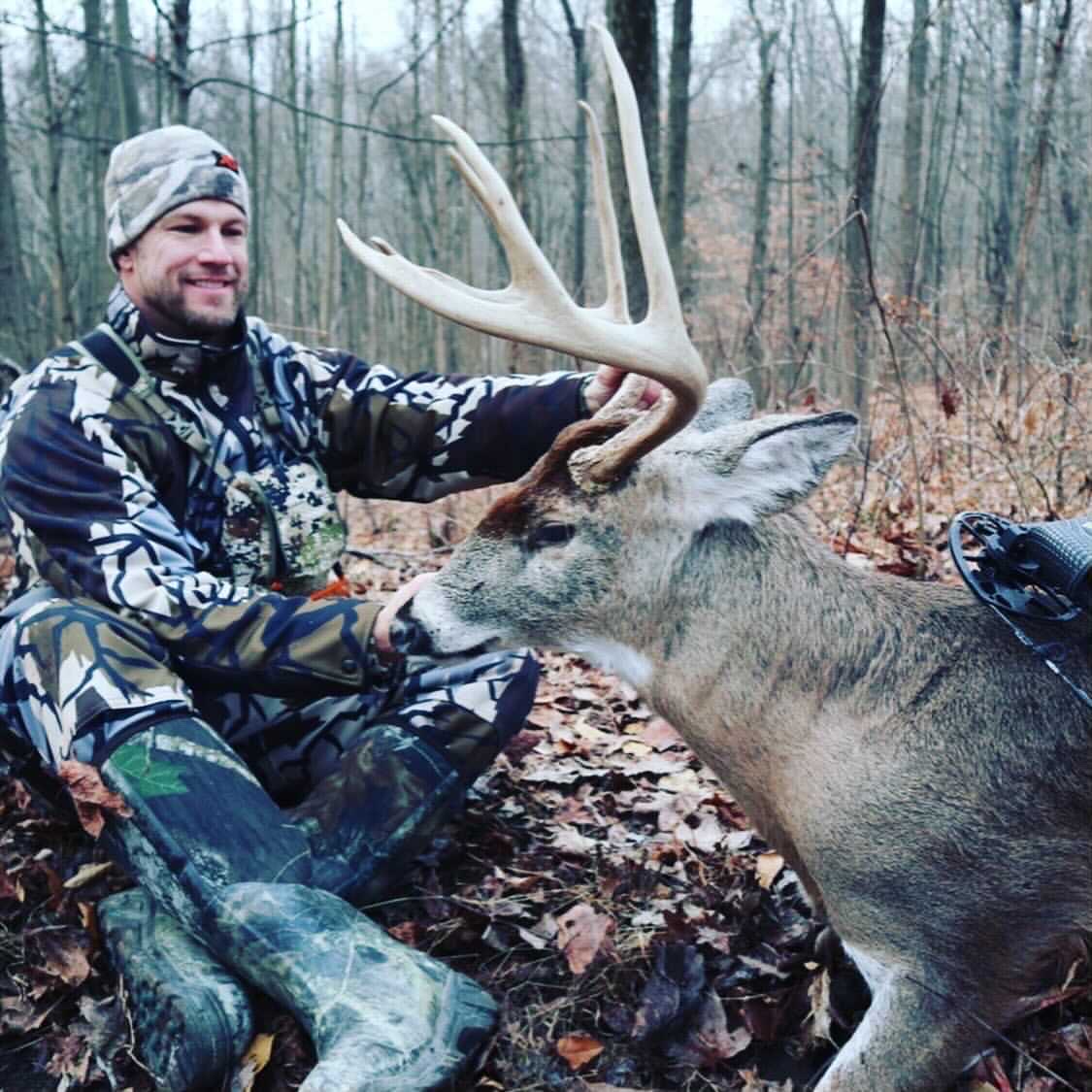
Tree Stand vs. Tree Saddle
How do you determine which way to go when choosing a mobile hunting set up? Saddles or lightweight tree stands? Unfortunately I can’t answer that for you. If the majority of your hunting consists of long walks through thick cover or difficult terrain and you value lighter weight and less bulk perhaps the tree saddle is right for you.
If weight isn’t much of a concern and a little extra bulk isn’t a deal breaker a lightweight tree stand and sticks might be the option for you. Another option is to do what I do and use both. I find that each scenario in hunting is a little different and what might work better in one scenario might not be the best option in a different one. I look at it as they are tools in my toolbox. Depending on the job at hand I’ll pick the appropriate tool.
Read Next: Mobile Treestand Test: Climber vs. Hang-On vs. Tree Saddle
Best Tree Stands, Climbing Sticks, and Tree Saddles
Here are some of the best stands, saddles and climbing sticks I’ve used over the years.
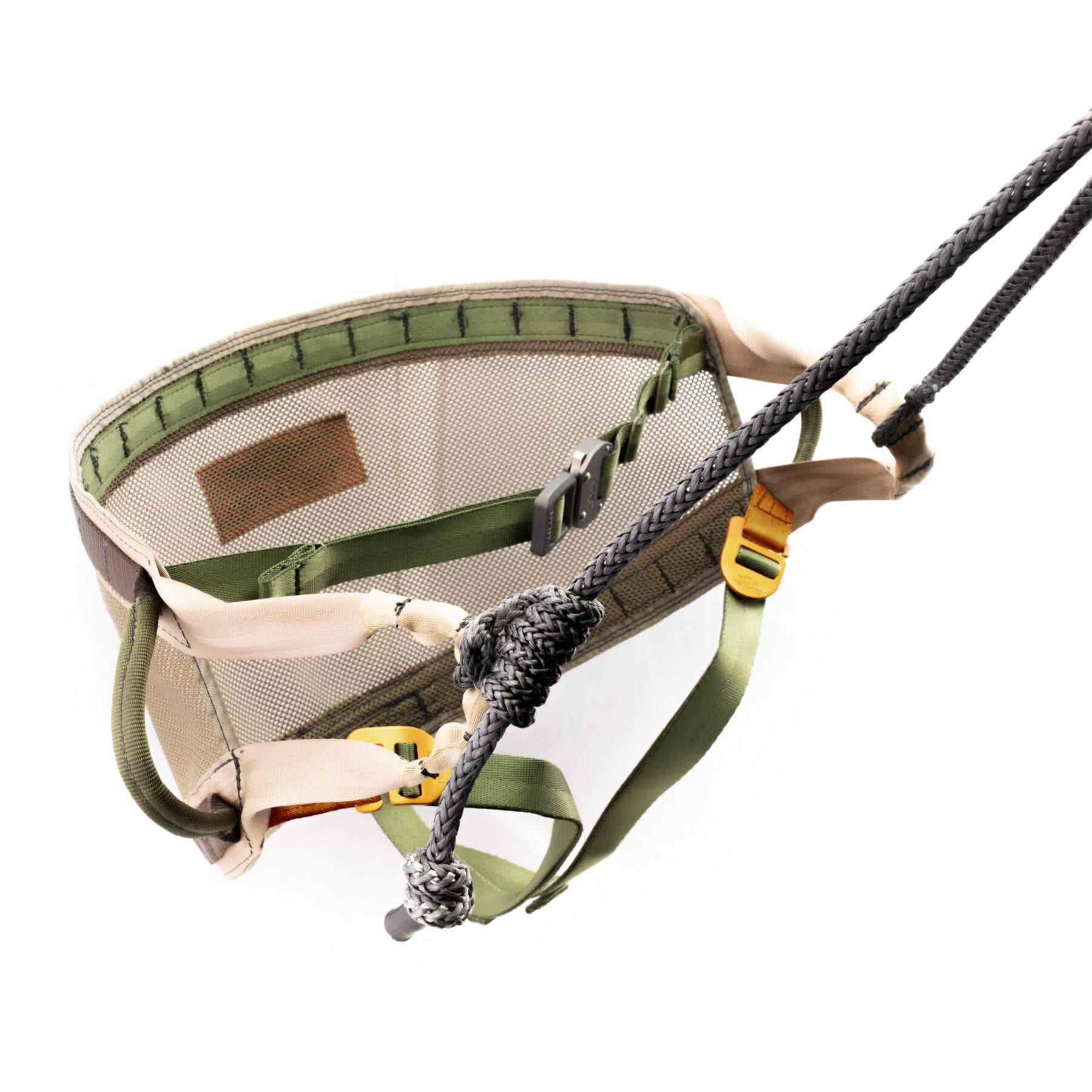
The Best Tree Saddle: Tethrd Phantom
The phantom saddle is simply best in class, in my opinion, when it comes to single panel saddles. From the fit and feel, to the features included in the design the Phantom is just a winner. The Phantom had a team of experienced tree saddle users put their heads together and build the saddle of their dreams and the Phantom is the design they came up with. While I certainly have sat in some other superb saddles, the Phantom is my favorite to date. Paired with the Tethrd Predator Platform, you have the deadliest combo in saddle hunting.
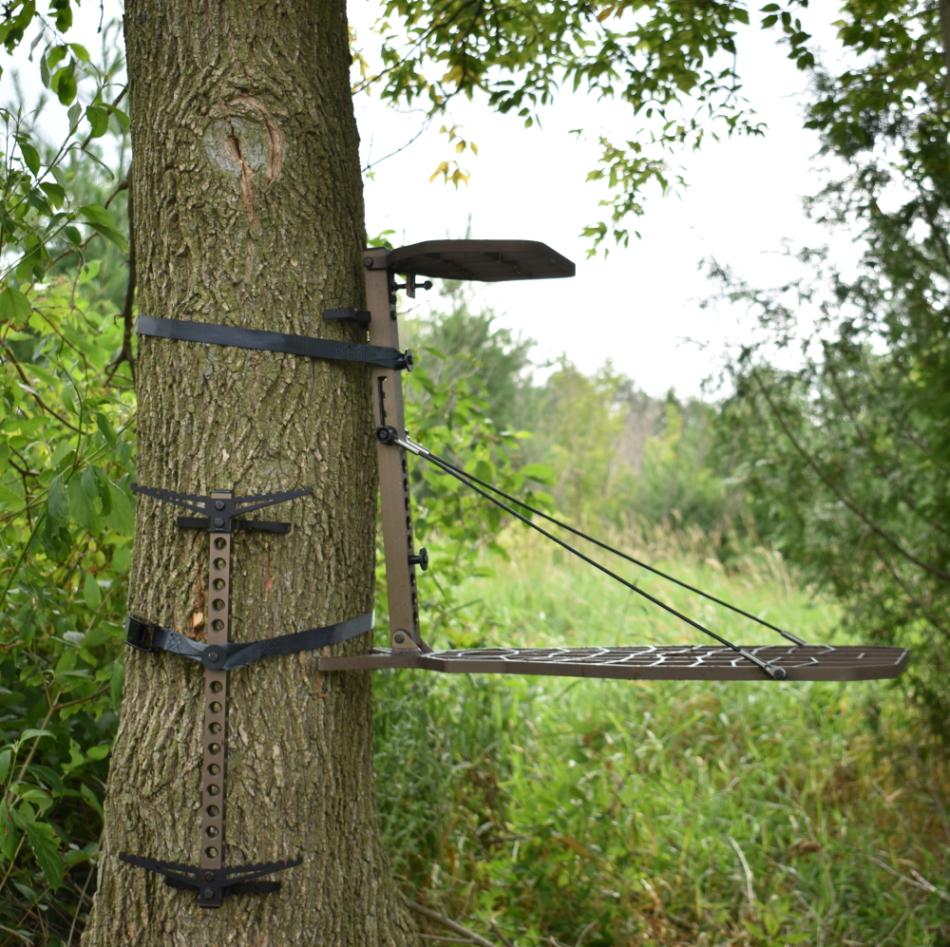
The Best Hang-On Tree Stand: The Hunting Beast Tree Stand
I’d describe this tree stand in one word—amazing. Fully rigged with seat cushion, buckle strap and shoulder straps it weighed in at a scant 7.1 pound. Surely a stand this light has no room on the platform, right? Wrong. While the stand is narrower than some of the competition to cut weight it is plenty long and fits my long 6 foot 3 inch frame just about perfectly.
Honorable Mention: It’s difficult to pick just one here but Novix and XOP offer some very nice lightweight options that come in at that 9 to 10 pound range. Another company, Lone Wolf Custom Gear, offers two different mobile hunting tree stands that are very light and seem to have a loyal following. Their stand and stick combo pairs nicely for awesome packability.
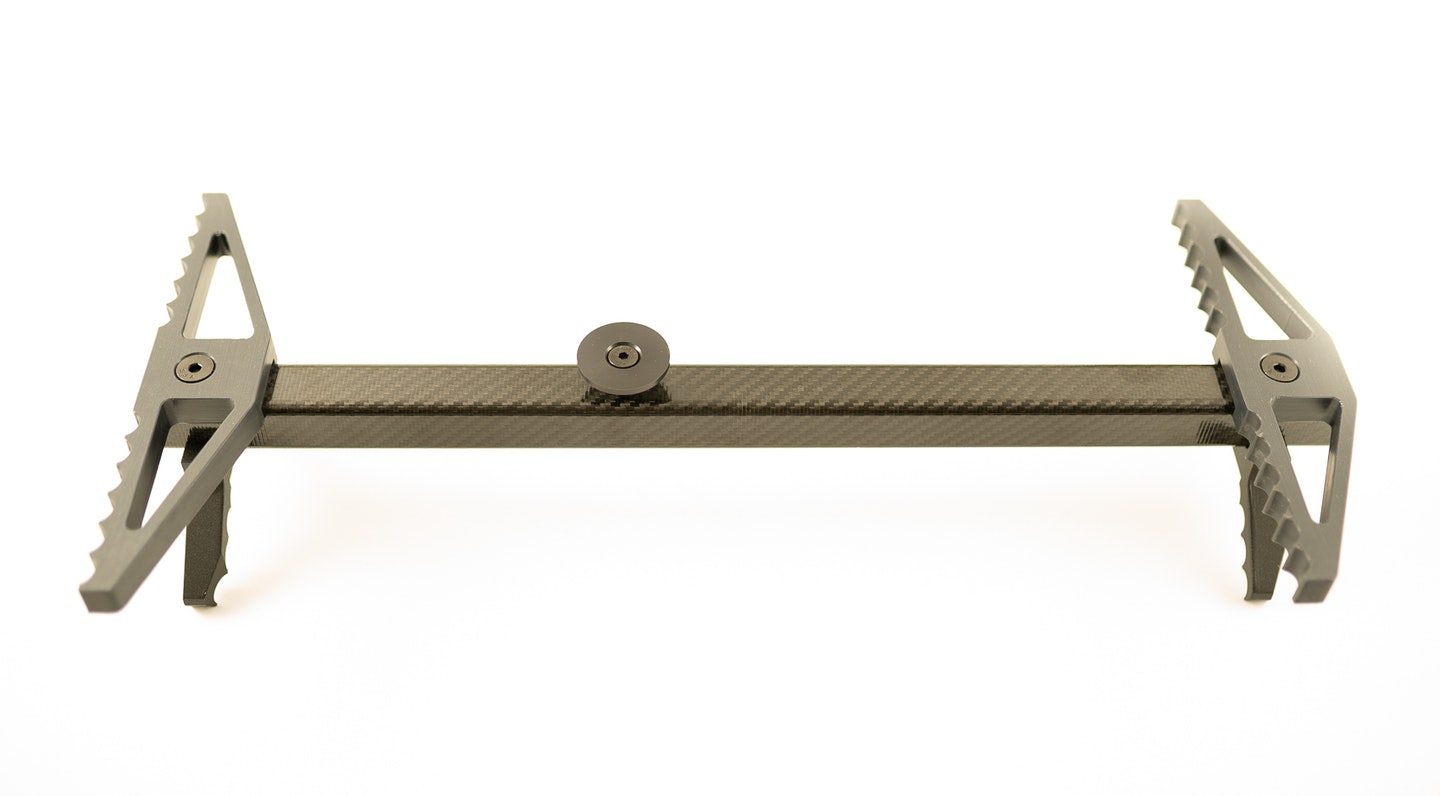
Climbing Sticks: The Tethrd One Sticks and Timber Ninja C1
I couldn’t pick one option for the best climbing stick, because the Tehrd One and Timber Ninja C1 are both equally awesome.
The Tethrd One Sticks come in at 1 pound each, which is mind boggling. They are a bit shorter than some other sticks on the market but the method of attaching them to the tree and stacking capabilities make these one of the top sticks on the market. If you value lightweight above all else, the Tethrd One Sticks are for you.
The Timber Ninja Outdoors C1 Carbon Fiber Sticks are just a joy to use. They come in a 20-inch or 24-inch option, and they also have the option of adding a retractable aider. An aider is an extension that hangs below the climbing stick to give you an extra step or two without adding much weight to the stick itself. The timber ninja sticks allow you to pull the aider out of the carbon fiber tube when you need it or to store it inside when you don’t. Add the warm to the touch carbon fiber, and you have one awesome stick. I was able to use these all of 2020 and they worked flawlessly.
The Upshot
The best mobile gear isn’t cheap, and you are going to drop some coin when you put together your mobile setup; there’s no way around it. I look at it as an investment into my hunting success because that one-time investment helps me avoid hunting pressure and move in on mature bucks. To me, those two benefits make it worth the cost.
